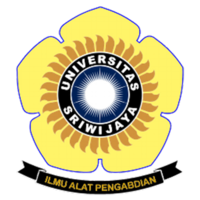Pengembangan Teknologi Budidaya Tanaman Adaptif di Rawa Lebak Sumatera Selatan Berbasis Kebutuhan Petani
Abstract
Herlinda S. 2019. Development of technology for cultivation adaptive crops in freshwater swamps of South Sumatra. In: Herlinda S et al. (Eds.), Prosiding Seminar Nasional Lahan Suboptimal 2019, Palembang 4-5 September 2019. pp 20-30. Palembang: Unsri Press.
Freshwater swamps is an ecosystem that is saturated with river water or rain throughout the year. This paper aimed to review the needs of farmers based on technology that could be developed in the suboptimal wetland or the freshwater swamps, specifically for commodities that were adaptive in the wetland ecosystem in Indonesia, especially South Sumatra. Now, many superior varieties have been invented that were resistant to pests and disease. Rice seedlings in the freshwater swamps generally still used a floating and “samir” system or a combination of both. Soil and planting began to use agricultural machinery, but it needed to be adjusted to the conditions of soil in the wetland. Farmers generally still used synthetic fertilizers and appropriate technology needs to be used to make compost from local materials. Pumping water management was still constrained by capital but farmers had difficulty managing water, especially in the freshwater swamps which would be drought during the dry season and flooded during the rainy season. Farmers needed dams for their fields so that water could be regulated using pumping. The rice were harvested using a combine harvester. The main problem for drying grains in the South Sumatra freshwater swamps was the scarcity of cheap and practical dryers. In addition to rice, adaptive vegetables in the freshwater swamps were grown, including chili, cucumber, bitter melon, long beans, cloves. Adaptive vegetables in the freshwater swamps that have been neglected by farmers were water lily, Leafy vegetable, and genjer plant. The adaptive rice and vegetables, if developed in an environmentally friendly manner, can improve the welfare of farmers.
Freshwater swamps is an ecosystem that is saturated with river water or rain throughout the year. This paper aimed to review the needs of farmers based on technology that could be developed in the suboptimal wetland or the freshwater swamps, specifically for commodities that were adaptive in the wetland ecosystem in Indonesia, especially South Sumatra. Now, many superior varieties have been invented that were resistant to pests and disease. Rice seedlings in the freshwater swamps generally still used a floating and “samir” system or a combination of both. Soil and planting began to use agricultural machinery, but it needed to be adjusted to the conditions of soil in the wetland. Farmers generally still used synthetic fertilizers and appropriate technology needs to be used to make compost from local materials. Pumping water management was still constrained by capital but farmers had difficulty managing water, especially in the freshwater swamps which would be drought during the dry season and flooded during the rainy season. Farmers needed dams for their fields so that water could be regulated using pumping. The rice were harvested using a combine harvester. The main problem for drying grains in the South Sumatra freshwater swamps was the scarcity of cheap and practical dryers. In addition to rice, adaptive vegetables in the freshwater swamps were grown, including chili, cucumber, bitter melon, long beans, cloves. Adaptive vegetables in the freshwater swamps that have been neglected by farmers were water lily, Leafy vegetable, and genjer plant. The adaptive rice and vegetables, if developed in an environmentally friendly manner, can improve the welfare of farmers.
Keywords: harvest and post-harvest technology, mechanization, seed technology, SERASI
Full Text:
PDFArticle Metrics
Abstract view : 761 timesPDF - 1494 times
Refbacks
- There are currently no refbacks.

